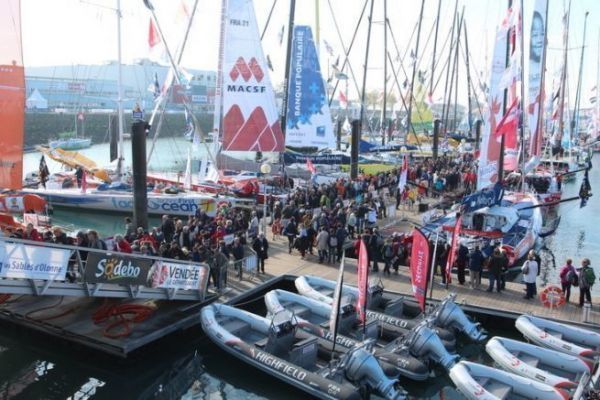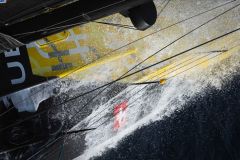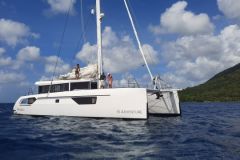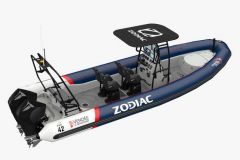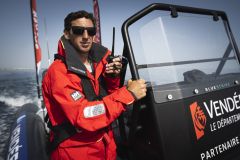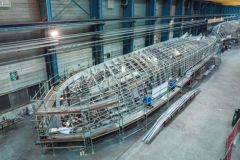Alexis, how are the teams organized to welcome a fleet of 40 IMOCA boats?
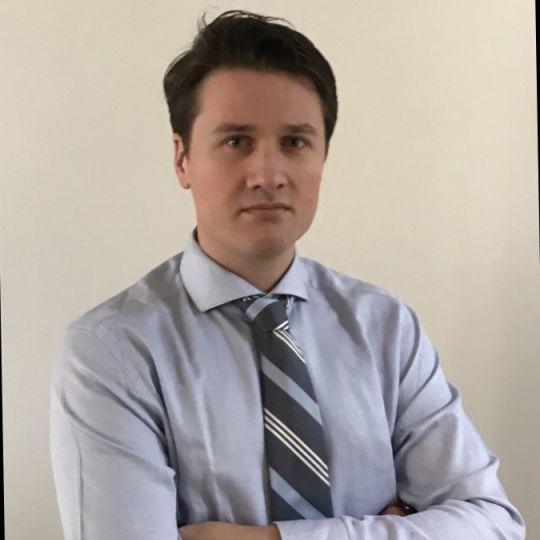
It's a huge job, which mobilizes the teams a year in advance of the event. Fourteen agents are mobilized for the occasion. The staff includes both technical and administrative personnel. Their experience is an asset in managing this project. Some of our staff have a number of Vendée Globe races under their belts, which is an undeniable asset. As far as I'm concerned, this is my first Vendée Globe, as I was previously based in the port of Douarnenez. It's a port where we've often hosted Mini races. Not so long ago, I was helping Violette Dorange moor her Mini in Douarnenez. Today, she comes to visit us in an IMOCA. The evolution is incredible.
How can so many places be freed up over such a long period?
It's a game of musical chairs. For two years now, we've been suspending the allocation of places in order to have as many as possible available. The dock where the IMOCA boats are moored has a capacity of 1,300. However, to accommodate the entire Vendée Globe fleet, plus the boats of the technical teams, partners and organization, we need to free up no less than 300 berths. Finally, we are also refusing all passenger stopovers from September 15 until November 15.
We dismantled several pontoons, and installed spreaders to moor the IMOCA boats butt-to-shore.
How do you manage and prioritize all these requests?
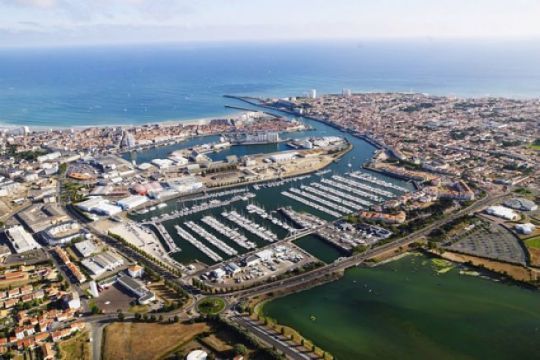
The most complicated thing to manage is the multitude of requests from different partners. We have to accommodate different projects, which sometimes take up a bit of space, but which have to be alongside the IMOCA boats. I'm thinking in particular of Yves Parlier's catamaran, which is powered by a kite, or Michel Desjoyeaux's follow-up boat, which is also a 60-foot catamaran.
Local associations also approach us to benefit from the exceptional visibility brought by the event. We have to make choices, and it's sometimes difficult to arbitrate.
The partner and assistance boats are all in the same basin?
Just about. We make some demands on the commercial port, but they also have limited availability.
Between the many professionals in the port and the boaters, how do you manage to get them to free up spaces for a month?
We're lucky to have local players and understanding boaters. Every year, dealers play along and free up space on the quayside.
As far as boaters are concerned, we need to encourage them to free up their berths for a month. To do this, we offer them a discount on their annual dues, with a one-twelfth reduction on their bill.
Most of them take advantage of the opportunity to put their boats ashore and carry out careening and wintering work. It's a win-win situation for the yachting industry, too, as it brings them many new jobs.
Is the operation still profitable for your organization?
As a port operator, all these measures don't improve our profitability. But the impact on the rest of the Sablais economy as a whole is incredible.
For this year's edition, the basin has been refurbished to accommodate 40 IMOCA boats. Will this number change in the future?
In fact, we carried out a million euro refit to accommodate these boats with a 4.50 m draught. We also dredged the channel. Technically, the basin can be upgraded to accommodate a few more IMOCA boats.

